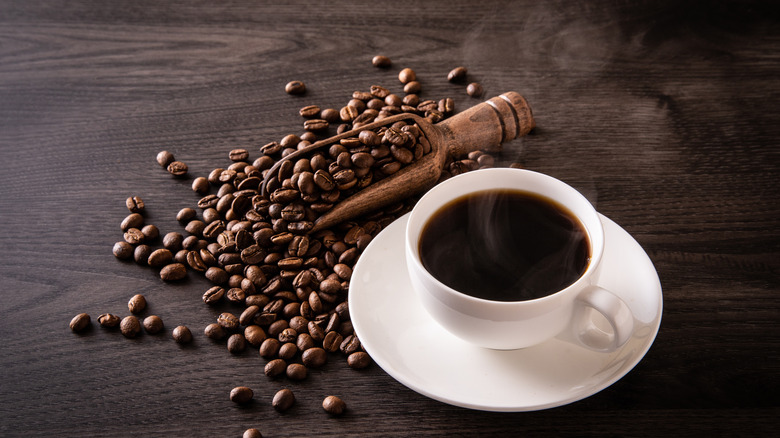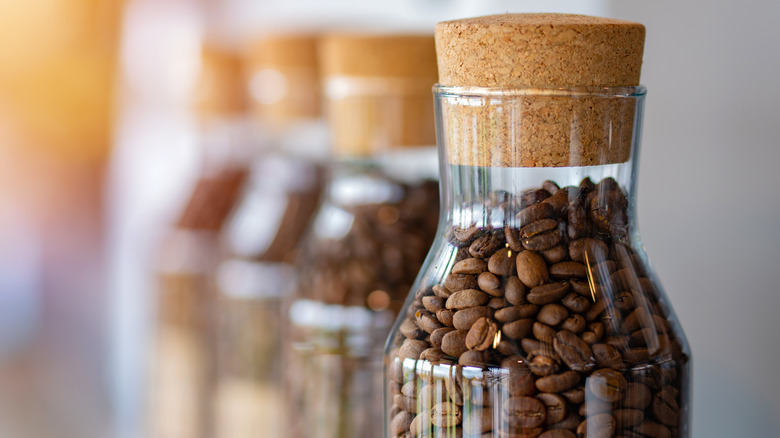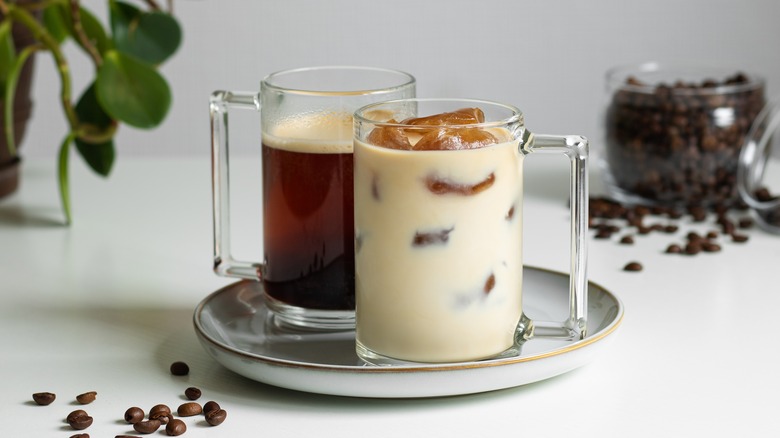What You Need To Know Before You Buy A Coffee Canister
Many people view coffee as an essential part of their daily routine. Whether you drink this beverage with milk, prefer it completely black, or enjoy it some other way, it's great for waking you up on those days when you just don't want to roll out of bed. Several different factors play a role in crafting a good pot of coffee, but beans are especially important. According to Nescafé, there are four main types of coffee beans: Arabica, Robusta, Exclesa, and Liberica. Some of these beans provide sweet, fruity, or floral notes, while others offer a stronger, woody flavor. So, it's important that you determine what flavors you enjoy before purchasing beans, as they can make or break your cup of coffee.
In addition to selecting the right beans, it's also imperative that you keep coffee fresh for as long as possible. Nobody wants stale coffee, as it typically lacks any flavor or aroma, per Coffee Bros. Want to ensure that you're always making a fresh cup of joe? Well, a coffee canister is what you need, but there are a few things you should know before purchasing one.
There are three types of coffee canisters
According to Fellow, there are three primary types of coffee canisters: Airtight, displacement, and vacuum. All of these canisters have benefits and drawbacks, and it's important that you're knowledgeable about them before choosing one to purchase. Of the three, airtight containers are the most popular. A benefit of these canisters is their ability to protect coffee beans from household pests. Additionally, they're great for making a home appear more organized and they are aesthetically pleasing. However, airtight containers don't really protect the coffee from oxygen, and this is a major downside, as this element degrades coffee beans (via Joy Resolve).
Displacement canisters are better than airtight containers at preventing oxygen exposure, per Fellow. Most of these devices have lids that you can push down into the canister, which eliminates a good bit of oxygen. Even so, you won't be able to remove all of the air from displacement canisters, which hinders their effectiveness. The third canister type, vacuum, is often regarded as the most efficient of the three. Most of these containers come with a separate device that pumps air out of them, keeping your coffee safe from oxygen and moisture, another element that degrades coffee, per Atlas Coffee Club. So, before buying a coffee canister, you should evaluate which type might be best for you, but keep in mind that vacuum canisters are generally the best option.
Other tips for making great coffee
While selecting the right beans and storing them properly play a major role in the quality of your coffee, there are other things you can do to elevate your coffee's flavor. According to EatingWell, one step you can take is to substitute tap water for bottled spring water. While it's easy to fill your coffee pot with water straight from the sink, bottled water may infuse your coffee with a more pleasant flavor. Another action that makes for an amazing cup of coffee is grinding your own beans. This does take a bit more time, but it's a step that ensures your coffee will be fresh, as you're grinding the beans right before brewing them.
Coffee Bros. Roastery reports that you should also pay attention to the coffee-to-water ratio. It's tempting to simply pour coffee into the filter until it looks like the right amount. However, doing this can result in a cup that's overly weak or strong. Keeping a close eye on how much coffee and water you use will allow you to craft a perfectly strong cup of joe.


